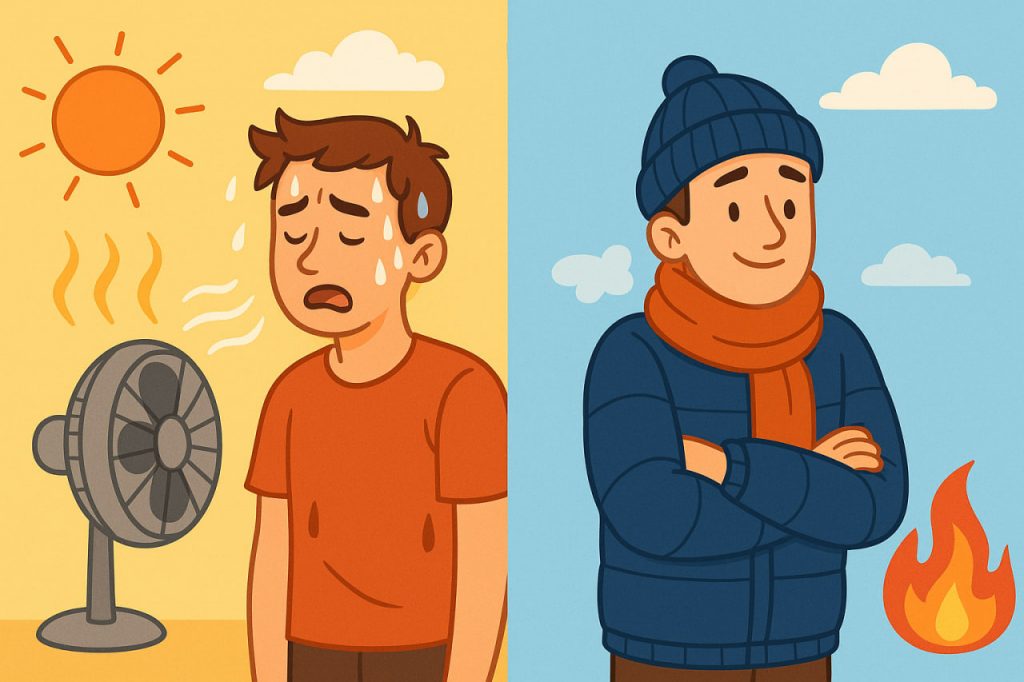Thermoregulation is the body’s ability to maintain a stable internal temperature despite changes in the environment. For humans, the ideal internal temperature is about 36.5–37°C (97.7–98.6°F). This process is vital for survival because even slight deviations can disrupt organ function and, in extreme cases, threaten life.
The Role of the Brain
The center of thermoregulation is located in the hypothalamus, a small region of the brain. It acts like a thermostat: it constantly monitors body temperature and triggers responses to either release heat or conserve it. The hypothalamus receives signals from temperature receptors in the skin, muscles, and internal organs.
Cooling Mechanisms
When the body overheats, several processes are activated to release heat:
- Sweating: sweat glands produce moisture, which evaporates and cools the skin.
- Vasodilation: blood vessels near the skin widen, allowing more blood flow and heat loss.
- Behavioral changes: seeking shade, drinking water, or removing layers of clothing.
Warming Mechanisms
When the body is exposed to cold, it conserves and generates heat:
- Shivering: rapid muscle contractions generate heat.
- Vasoconstriction: blood vessels narrow to keep heat near vital organs.
- Metabolic boost: hormones such as adrenaline increase energy use to raise body temperature.
- Behavioral changes: putting on warm clothes, moving to a warmer place.
Factors That Influence Thermoregulation
Thermoregulation can be affected by age, hydration, illness, and environmental conditions. For example, infants and elderly people are more vulnerable to heat or cold stress because their thermoregulation systems are less efficient. Dehydration also reduces the body’s ability to sweat, increasing the risk of overheating.
Thermoregulation and Health
Proper thermoregulation ensures survival during extreme temperatures. If the system fails, conditions such as hypothermia (dangerous cooling) or hyperthermia (dangerous overheating) may occur. These require immediate medical attention. Everyday experiences like fever also involve thermoregulation, as the body raises its temperature to fight infections.
Conclusion
Thermoregulation is a critical function that balances heat production and heat loss, keeping the human body within safe temperature limits. Controlled by the hypothalamus and supported by both physiological and behavioral responses, it allows humans to adapt to a wide range of environments. Protecting this system with hydration, proper clothing, and healthy habits is essential for well-being.
Glossary
- Thermoregulation – the process of maintaining a stable body temperature.
- Hypothalamus – the brain region that regulates temperature and other vital functions.
- Vasodilation – widening of blood vessels to release heat.
- Vasoconstriction – narrowing of blood vessels to conserve heat.
- Hypothermia – dangerously low body temperature.
- Hyperthermia – dangerously high body temperature.


